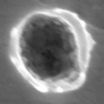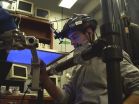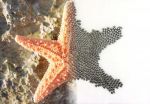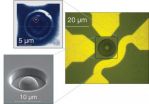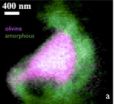(Press-News.org) Histone deacetylase (HDAC) inhibitors have shown promise in "flushing out" HIV from latently infected cells, potentially exposing the reservoirs available for elimination by cytotoxic T lymphocytes (CTL), also called killer T cells. However, findings published on August 14th in PLOS Pathogens now suggest that treatment with HDAC inhibitors might suppress CTL activity and therefore compromise the "kill" part of a two-pronged "flush-and-kill" HIV eradication strategy.
At least three different HDAC inhibitors, romidepsin, panobinostat, and SAHA, are under investigation as flushing agents. The individual drugs differ somewhat in their specificity for the 18 known human HDACs, and are also known to interact with other cellular factors and to alter the function of immune cells. Arguing that "this high degree of complexity both in terms of immunological outcomes and underlying mechanisms, necessitates that HDAC inhibitors be studied in a context that is matched to their intended utility", Brad Jones, from the Ragon Institute of Massachusetts General Hospital, Massachusetts Institute of Technology and Harvard, Boston, USA, and colleagues set out to test whether the three drugs affected the ability of CTL to eliminate HIV-infected target cells.
While the individual effects of the drugs on virus-specific CTL differ somewhat depending on specific assays, schedules, and doses, treatment with any of the three HDAC inhibitors impaired the ability of CTL to kill HIV-infected immune cells. All three drugs also rapidly suppressed CTL production of the key immune mediator interferon gamma.
Discussing the limitations of the study, the researchers state that, because their assays all involve drug treatment of CTL in cell culture settings, the extent to which HDAC inhibitors impact CTL function in HIV infected patients remains unknown. Consequently, they hope that their results will "motivate the incorporation of assays measuring ex-vivo T-cell function into ongoing and planned clinical trials of HDAC inhibitors, and that immunosuppression will be considered as a potential factor limiting the effectiveness of any observed outcomes". They also highlight the potential broader risk of treating HIV-positive individuals—whose immune systems remain compromised even on antiretroviral therapy—with HDAC inhibitors that have shown immunosuppressive activity in several studies, including this one.
INFORMATION:
Please contact plospathogens@plos.org if you would like more information about our content and specific topics of interest.
All works published in PLOS Pathogens are open access, which means that everything is immediately and freely available. Use this URL in your coverage to provide readers access to the paper upon publication:
http://dx.plos.org/10.1371/journal.ppat.1004287 (Link goes live upon article publication)
Contact:
R. Brad Jones
e-mail: rbjones@mit.edu
phone: +1.617.777.9151
Authors and Affiliations:
Richard Brad Jones, The Ragon Institute of Massachusetts General Hospital, USA; Koch Institute for Integrative Cancer Research, USA
Rachel O'Connor, The Ragon Institute of Massachusetts General Hospital, USA
Stefanie Mueller, The Ragon Institute of Massachusetts General Hospital, USA; Koch Institute for Integrative Cancer Research, USA
Maria Foley, Koch Institute for Integrative Cancer Research, USA; MIT, USA
Gregory L. Szeto, Koch Institute for Integrative Cancer Research, USA; MIT, USA
Dan Karel, The Ragon Institute of Massachusetts General Hospital, USA
Mathias Lichterfeld, Massachusetts General Hospital, USA
Colin Kovacs, The Maple Leaf Medical Clinic, Canada; University of Toronto, Canada
Mario A. Ostrowski, The Maple Leaf Medical Clinic, Canada; University of Toronto, Canada; St. Michael's Hospital, Canada
Alicja Trocha, The Ragon Institute of Massachusetts General Hospital, USA
Darrell J. Irvine, The Ragon Institute of Massachusetts General Hospital, USA; Koch Institute for Integrative Cancer Research, USA; MIT, USA; Howard Hughes Medical Institute, USA
Bruce D. Walker, The Ragon Institute of Massachusetts General Hospital, USA; Massachusetts General Hospital, USA; Howard Hughes Medical Institute, USA
Citation: Jones RB, O'Connor R, Mueller S, Foley M, Szeto GL, et al. (2014) Histone Deacetylase Inhibitors Impair the Elimination of HIV-Infected Cells by Cytotoxic T-Lymphocytes. PLoS Pathog 10(8): e1004287. doi:10.1371/journal.ppat.1004287
Drugs that flush out HIV may impair killer T cells, possibly hindering HIV eradication
2014-08-14
ELSE PRESS RELEASES FROM THIS DATE:
Plants may use newly discovered language to communicate, Virginia Tech scientist discovers
2014-08-14
VIDEO:
This time-lapse video shows how the parasitic plant dodder attacks tomatoes. But beyond stealing nutrients from the host plants, a Virginia Tech researcher has discovered that the two plants also...
Click here for more information.
A Virginia Tech scientist has discovered a potentially new form of plant communication, one that allows them to share an extraordinary amount of genetic information with one another.
The finding by Jim Westwood, a professor of plant pathology, ...
Human contribution to glacier mass loss on the increase
2014-08-14
This news release is available in German.
The ongoing global glacier retreat causes rising sea-levels, changing seasonal water availability and increasing geo-hazards. While melting glaciers have become emblematic of anthropogenic climate change, glacier extent responds very slowly to climate changes. "Typically, it takes glaciers decades or centuries to adjust to climate changes," says climate researcher Ben Marzeion from the Institute of Meteorology and Geophysics of the University of Innsbruck. The global retreat of glaciers observed today started around the middle ...
Seven tiny grains captured by Stardust likely visitors from interstellar space
2014-08-14
Since 2006, when NASA's Stardust spacecraft delivered its aerogel and aluminum foil dust collectors to Earth, a team of scientists has combed through the collectors in search of rare, microscopic particles of interstellar dust.
The team now reports that they have found seven dust motes that probably came from outside our solar system, perhaps created in a supernova explosion millions of years ago and altered by eons of exposure to the extremes of space. They would be the first confirmed samples of contemporary interstellar dust.
"They are very precious particles," ...
Memories of errors foster faster learning
2014-08-14
Using a deceptively simple set of experiments, researchers at Johns Hopkins have learned why people learn an identical or similar task faster the second, third and subsequent time around. The reason: They are aided not only by memories of how to perform the task, but also by memories of the errors made the first time.
"In learning a new motor task, there appear to be two processes happening at once," says Reza Shadmehr, Ph.D., a professor in the Department of Biomedical Engineering at the Johns Hopkins University School of Medicine. "One is the learning of the motor ...
Harnessing the power of bacteria's sophisticated immune system
2014-08-14
Bacteria's ability to destroy viruses has long puzzled scientists, but researchers at the Johns Hopkins Bloomberg School of Public Health say they now have a clear picture of the bacterial immune system and say its unique shape is likely why bacteria can so quickly recognize and destroy their assailants.
The researchers drew what they say is the first-ever picture of the molecular machinery, known as Cascade, which stands guard inside bacterial cells. To their surprise, they found it contains a two-strand, unencumbered structure that resembles a ladder, freeing it to ...
Message to parents: Babies don't 'start from scratch'
2014-08-14
There's now overwhelming evidence that a child's future health is influenced by more than just their parents' genetic material, and that children born of unhealthy parents will already be pre-programmed for greater risk of poor health, according to University of Adelaide researchers.
In a feature paper called "Parenting from before conception" published in today's issue of the top international journal Science, researchers at the University's Robinson Research Institute say environmental factors prior to conception have more influence on the child's future than previously ...
A self-organizing thousand-robot swarm
2014-08-14
Cambridge, Mass. – August 14, 2014 – The first thousand-robot flash mob has assembled at Harvard University.
"Form a sea star shape," directs a computer scientist, sending the command to 1,024 little bots simultaneously via an infrared light. The robots begin to blink at one another and then gradually arrange themselves into a five-pointed star. "Now form the letter K."
The 'K' stands for Kilobots, the name given to these extremely simple robots, each just a few centimeters across, standing on three pin-like legs. Instead of one highly-complex robot, a "kilo" of robots ...
Molecular engineers record an electron's quantum behavior
2014-08-14
A team of researchers led by the University of Chicago has developed a technique to record the quantum mechanical behavior of an individual electron contained within a nanoscale defect in diamond. Their technique uses ultrafast pulses of laser light both to control the defect's entire quantum state and observe how that single electron state changes over time. The work appears in this week's online Science Express and will be published in print later this month in Science.
This research contributes to the emerging science of quantum information processing, which demands ...
Mysteries of space dust revealed
2014-08-14
The first analysis of space dust collected by a special collector onboard NASA's Stardust mission and sent back to Earth for study in 2006 suggests the tiny specks, which likely originated from beyond our solar system, are more complex in composition and structure than previously imagined.
The analysis, completed at a number of facilities including the U.S. Department of Energy's Lawrence Berkeley National Lab (Berkeley Lab) opens a door to studying the origins of the solar system and possibly the origin of life itself.
"Fundamentally, the solar system and everything ...
New Milky Way maps help solve stubborn interstellar material mystery
2014-08-14
An international team of sky scholars, including a key researcher from Johns Hopkins, has produced new maps of the material located between the stars in the Milky Way. The results should move astronomers closer to cracking a stardust puzzle that has vexed them for nearly a century.
The maps and an accompanying journal article appear in the Aug. 15 issue of the journal Science. The researchers say their work demonstrates a new way of uncovering the location and eventually the composition of the interstellar medium—the material found in the vast expanse between star systems ...


